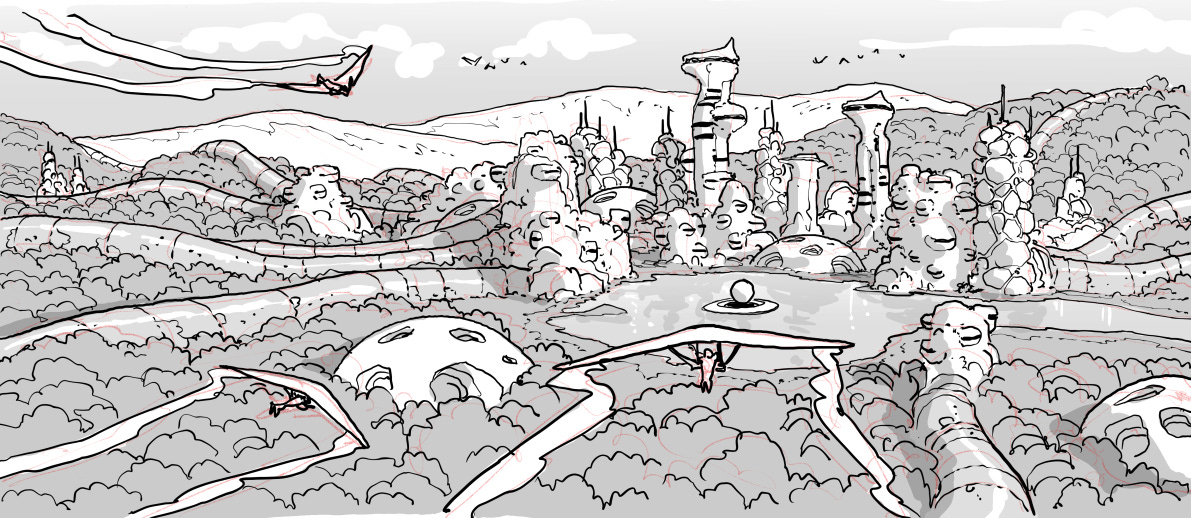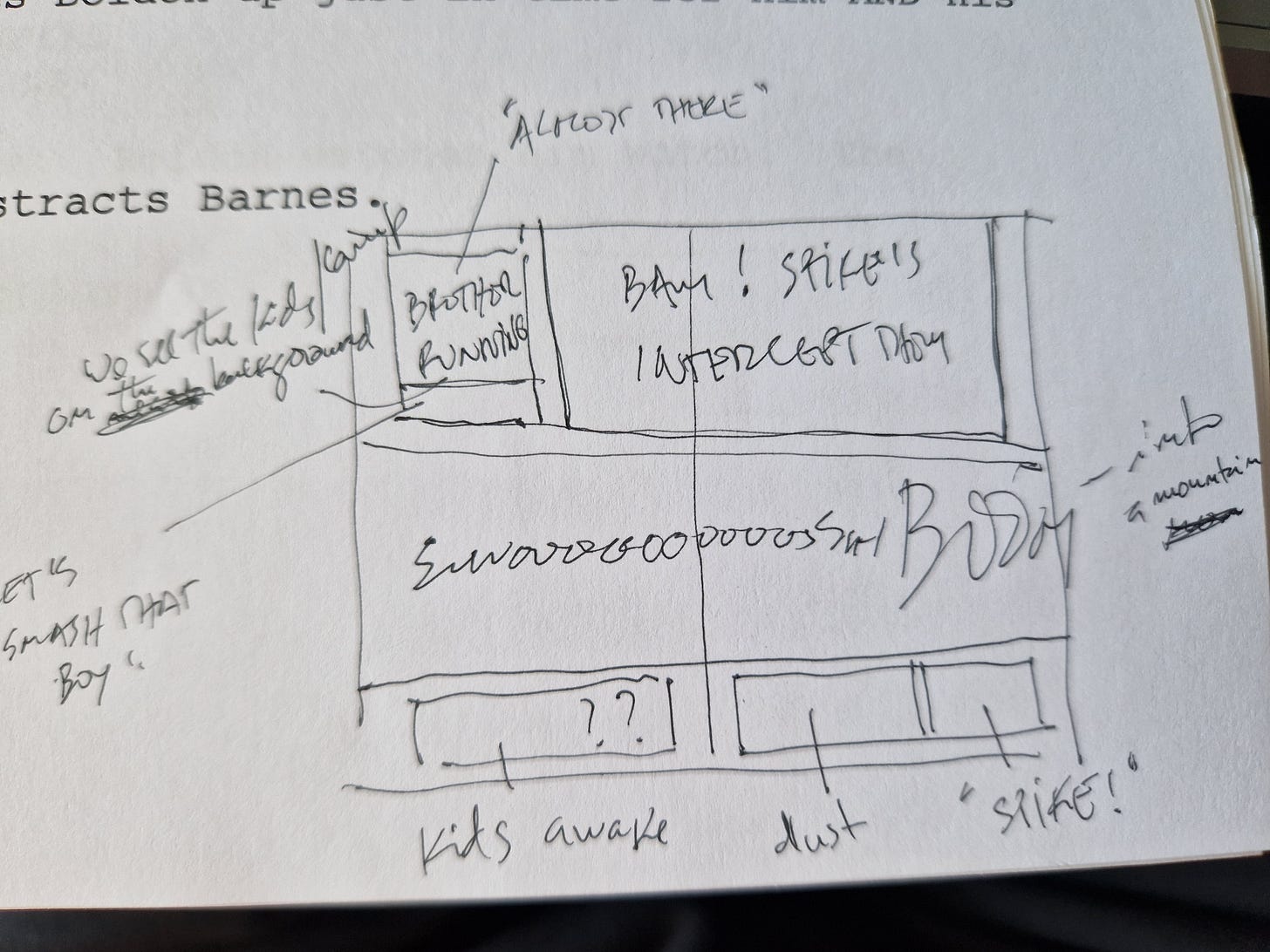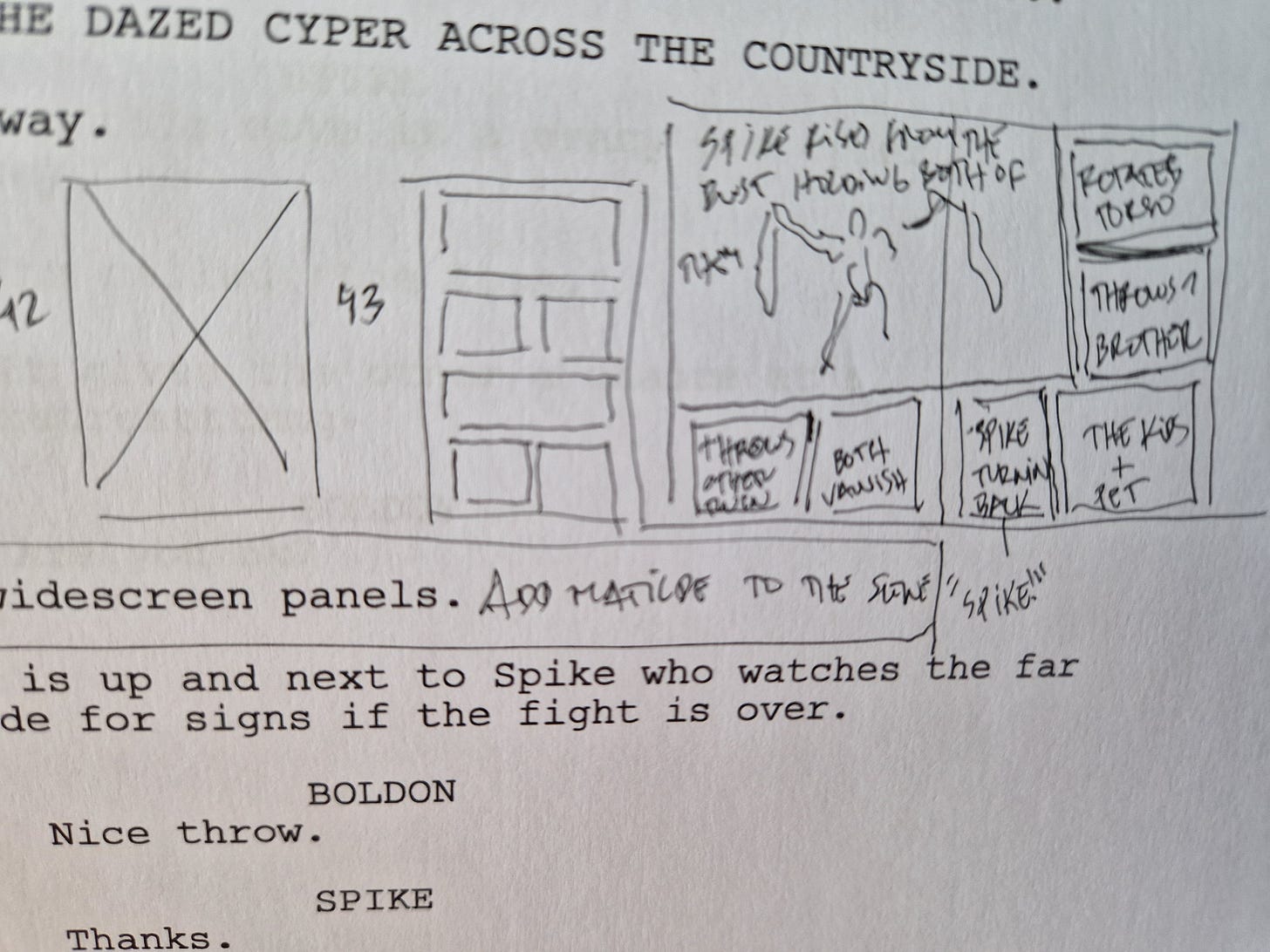Beginning Phenomena Book 3
Designs, layouts and thumbnails
Hello from Castrum Lusitania, my fortress in northern Portugal. Welcome to another edition of our weekly newsletter.
As you might remember from last week’s newsletter, Phenomena Book 2 is done! May Book 3 begin!
And begun it has. So this week let’s make an overview of the processes behind the initial push of a new book.
The initial steps
This is a particular kind of a new book, since it’s a sequel with a lot already built that we can continue. At the same time, it’s the final volume of a trilogy, so no matter how satisfied we are with the first two entries of Phenomena (and we are very satisfied with them), you always want something fresh and new.
So while working on Book 2, me and Brian Bendis also chatted about what we wanted to happen in Book 3. As the second one kept being done, I started having some visuals in mind that I wanted to do: in part motivated by the visuals themselves but also motivated by the desire to NOT repeat myself over and over again.
With that in mind, I sent Brian a bunch of designs that moved away from the cityscapes of volume 2 and 1. He combined those with the plot he was already deeply working on and we got some exciting new directions to explore. Here’s one of the images I sent him:
This (and other ideas) have already been reworked with the combination of our individual efforts, so you might not see this particular image in the final book, but many of its ideas applied.
Basically, we’re keeping the original method of creation that lead to this book across it’s three volumes: to send each other ideas that the other person picks up, adapts, runs with it and sends it back. It’s the back and forth that keeps pushing both of us to places we wouldn’t ago working alone.
Script, layouts and thumbnails
Brian ran me through the entire plot in one of our chats the other day, which allows me to design even more things (now as a response to a script) with the entire story in mind and it’s my preferred way of working.
After Brian sends me some actual script, I give it a good read, from beginning to end to get a sense of what happens. Then I reread it and draw layouts only (just the shape of the panels) while seeing the action in my head. This is the phase where I work the flow of the story and usually introduce some changes to the original script. Most of it is combining panels, breaking down panels, cutting and pasting some bits. Basically, it consists on multiple tweaks to allow the best possible flow for the narrative and story we want to tell. As Brian always puts it, he tells a story so I can tell a story.
A good example is one of the action scenes. Brian left me some pages with a vague description so I knew how it begins and ends. The first thing I do is literally sit back and imagine the set piece in my head based on the number of available pages. Then I start attributing bits to pages, particularly anchor scenes: the big panels, the big moments. The rest starts filling itself.
At this stage I kinda know what the images look like so, as I draw the layout, I write in each panel what’s going on. That way I’ll remember what was in my head when I’m drawing the thumbnails. See below the planning for a couple of spreads of this sequence:
Or here, where I did another spread and then drew next it the same panels in single pages (to the left). That’s because I felt the big image in the spread would work better as a splash page:
With all this process done I am now drawing the thumbnails per se in my iPad, using all the notes and scribbles I did on the script as a guide. I still make small changes (mostly adding small panels etc) to clarify the action and make sure it’s all working properly when it comes to panel-to-panel and page-to-page transition.
Here below you can me just before drawing the thumbnails for a spread:
Things are advancing nicely and next week I’ll be starting penciling the first pages of our third volume. For the first time, I’ll be doing it digitally, but just the pencils. Then I’ll print it out and ink it traditionally. But we’ll go over the reasons and the process in another newsletter.
Recommendation
For now I’ll leave you with a recommendation for a great action movie I’ve seen this week: Wheelman. See the trailer below:
It’s a small but really well made thriller/crime movie. Very old school in its approach, no CGI (or if there is, it’s unnoticeable), it’s all about the acting and the stunts.
What sets it apart is that it’s mostly shot from the car the main character is driving, with cameras either inside or on the outside of the vehicle, allowing you to be in the center of the action the entire time. In some scenes, the main character leaves the car and everything becomes incredibly tense: not only is he much more vulnerable but you also can’t see properly what’s going on.
It’s a brilliant idea with a brilliant execution. And filming everything from the car allows you to get away with a lot in terms of production because there are no wide shots. Hence why this movie has a budget of 5 million USD. Trust me, it will feel much more expensive than that. Everything works perfectly, but Frank Grillo shines brighter than anything else. He has the camera inches away from his face most of movie and his reactions and emotions carry a lot of weight since it’s all you see at times.
Give it a shot, it’s less than 90 mins and one hell of a ride.
—
See you all next week!
André








Can’t wait for book 2 and 3!